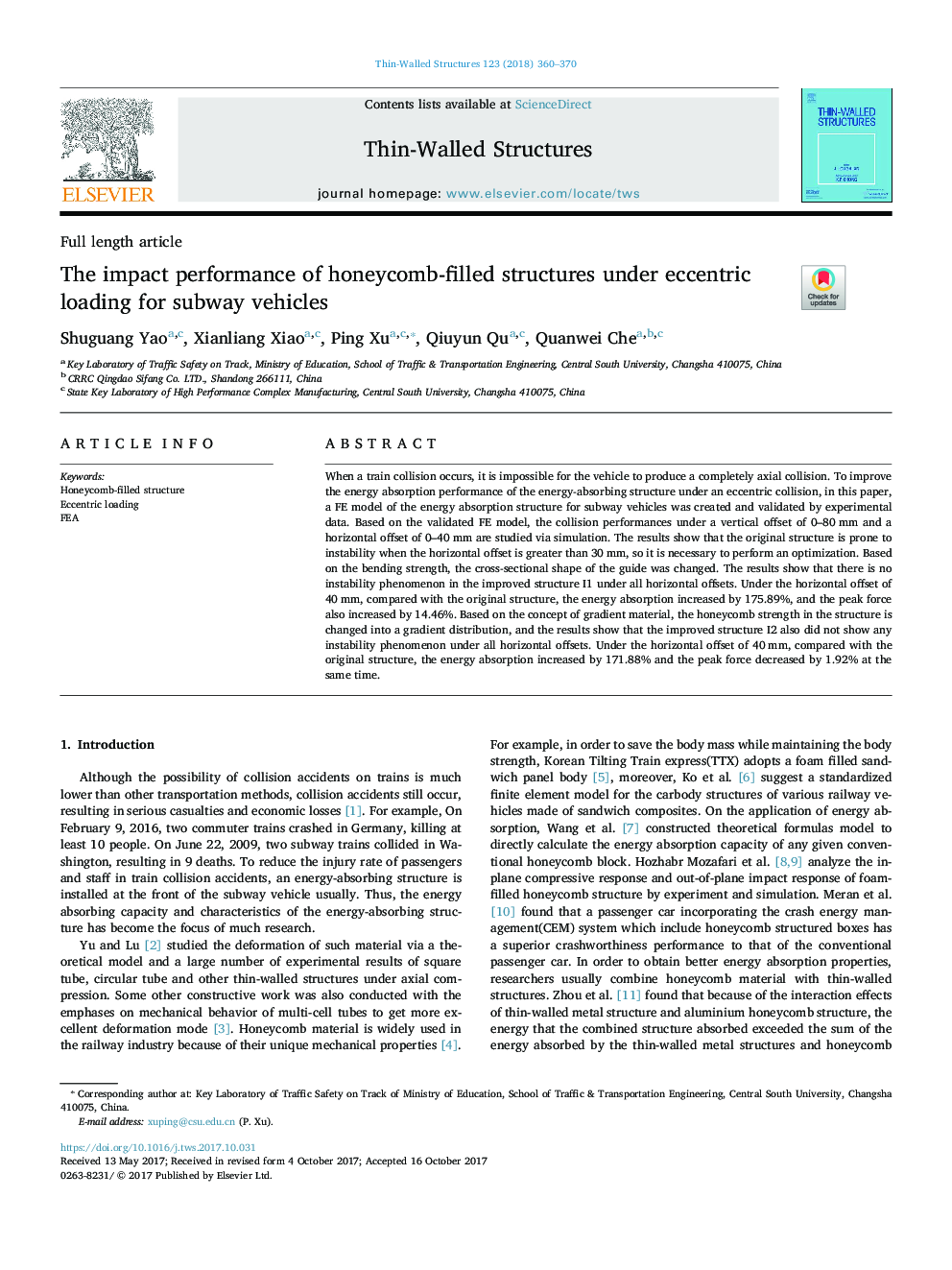| Article ID | Journal | Published Year | Pages | File Type |
|---|---|---|---|---|
| 6778582 | Thin-Walled Structures | 2018 | 11 Pages |
Abstract
When a train collision occurs, it is impossible for the vehicle to produce a completely axial collision. To improve the energy absorption performance of the energy-absorbing structure under an eccentric collision, in this paper, a FE model of the energy absorption structure for subway vehicles was created and validated by experimental data. Based on the validated FE model, the collision performances under a vertical offset of 0-80Â mm and a horizontal offset of 0-40Â mm are studied via simulation. The results show that the original structure is prone to instability when the horizontal offset is greater than 30Â mm, so it is necessary to perform an optimization. Based on the bending strength, the cross-sectional shape of the guide was changed. The results show that there is no instability phenomenon in the improved structure I1 under all horizontal offsets. Under the horizontal offset of 40Â mm, compared with the original structure, the energy absorption increased by 175.89%, and the peak force also increased by 14.46%. Based on the concept of gradient material, the honeycomb strength in the structure is changed into a gradient distribution, and the results show that the improved structure I2 also did not show any instability phenomenon under all horizontal offsets. Under the horizontal offset of 40Â mm, compared with the original structure, the energy absorption increased by 171.88% and the peak force decreased by 1.92% at the same time.
Keywords
Related Topics
Physical Sciences and Engineering
Engineering
Civil and Structural Engineering
Authors
Shuguang Yao, Xianliang Xiao, Ping Xu, Qiuyun Qu, Quanwei Che,
